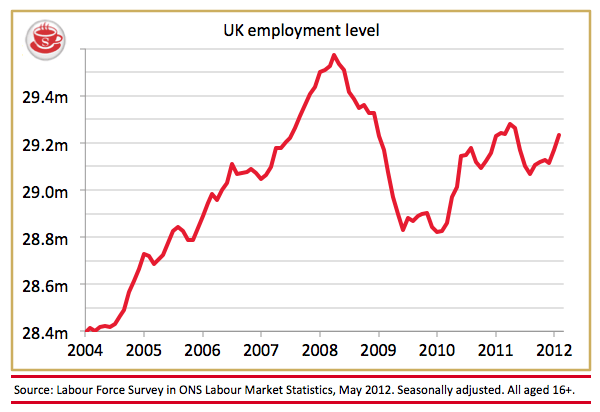Today’s jobs figures show a 105,000 rise in employment and a 45,000 fall in unemployment, from the final quarter of 2011 to the first quarter of 2012. Welcome news, although both figures are within the margin of error, meaning we can’t say with confidence that employment is indeed higher or that unemployment is lower. But even taking the figures at face value, there’s another cause for concern: the rise in employment is coming in part-time, rather than full-time, jobs.
First, let’s take a look at that total employment figure, which has risen 105,000 since the last quarter and 219,000 since the general election:
Second, the number of full-time workers:

As you can see, full-time employment took a bigger dive when the recession hit than overall employment, and has not recovered nearly as much since. Indeed, in the last quarter the number of
full-time workers dropped slightly, by 13,000. The rise in total employment was entirely accounted for by an increase in part-time workers:

As the above graph shows, the number of part-time workers has risen by half a million since the start of the recession, and now stands at 8 million — the highest figure since comparable
records began in 1992. Of course, the majority of these work part-time out of choice, or because they’re ill, disabled or in education. But these tough economic times mean that an increasing
number who want to work full-time are having to settle for part-time work because that’s all they can find. The number who fall into that category has doubled since the recession hit —
today’s figures put it at a record high of 1.42 million:







Comments